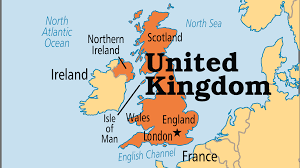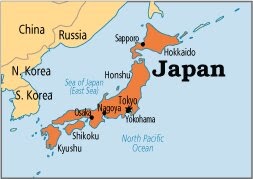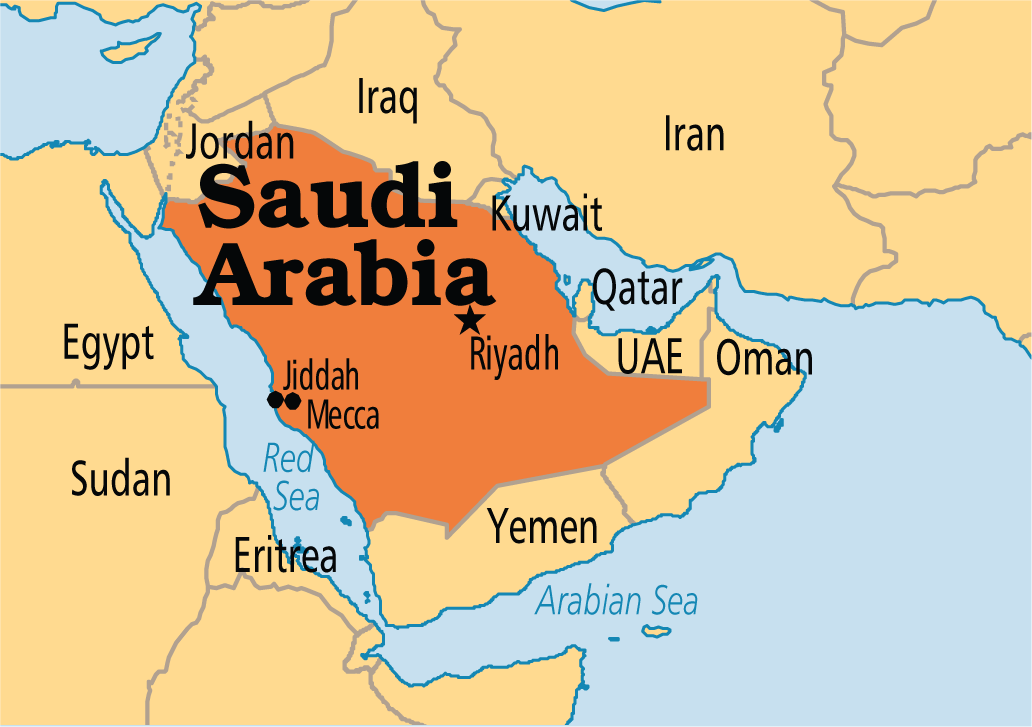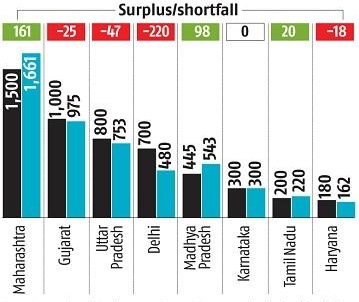International Relations
UK’s Indo-Pacific Tilt
Why in News
Recently, the British Government said that the UK Carrier Strike Group’s “globe-spanning maiden deployment will feature visits to India, Japan, Republic of Korea and Singapore”.
- Earlier, the European Union had announced that it will reinforce its strategic focus, presence and actions in the Indo-Pacific with the aim of contributing to the stability, security, prosperity and sustainable development of the region.
Key Points
- About the UK Carrier Strike Group (CSG):
- CSG:
- Carrier strike groups are often formed for a specific mission rather than by platform.
- The carrier is typically part of a larger formation, usually including destroyers, frigates and submarines, as well as logistical-support ships.
- The carrier provides the primary offensive air power, while the other vessels provide the wider defence and support role and can also participate offensively, such as with the launch of missile systems.
- UK CSG:
- It will be led by the aircraft carrier HMS Queen Elizabeth.
- It will be a global deployment, from the North Atlantic to the Indo-Pacific.
- The “28-week deployment” will span 26,000 nautical miles, and CSG will undertake over 70 engagements in over 40 nations.
- As part of the UK’s tilt towards the Indo-Pacific region, the CSG will conduct engagements with Singapore, the Republic of Korea, Japan and India.
- UK CSG Deployment in Indo-Pacific:
- It will bolster already deep defence partnerships in the region, where the UK is committed to a more enduring regional defence and security presence.
- Engagement in Singapore, the Republic of Korea, Japan and India will provide the opportunity for strengthening the UK’s security relationships, tightening political ties and supporting UK exports and International Trade agenda.
- CSG:
- India-UK Ties:
- Political Cooperation:

- The bilateral relationship was upgraded to a strategic partnership in 2004.
- The UK has reaffirmed its support for India’s permanent membership of the UN Security Council.
- Scope in Economic Cooperation:
- India’s skilled labour, technological assistance and the vibrant market will open a lot of avenues for Britain which has recently parted ways with the European Union.
- Along with the world, India is now steering towards 5G. The UK will need India’s help to marginalize China in the telecom market.
- The UK is one of the largest investors in India, among the G20 countries.
- Defence Exercises:
- Air Force Exercise ‘Indradhanush’.
- Navy Exercise Konkan.
- Army Exercise: Ajeya Warrior
- Political Cooperation:
- Indo-Pacific: The New Point of Convergence:
- With the UK expanding its footprint in the Indo-Pacific and India working toward gaining prominence as the net security provider in the region, both countries’ aspirations and future seem to be intertwined.
- An area of focus up ahead should be to enhance military-to-military interactions.
- While there exist service-specific joint training exercises, their pace has not matched with India’s exercises with the US.
- The lack of foundational agreements may be acting as a limiting factor as well. While an MoU on joint training is under development, a military logistics agreement is expected to be signed soon.
- This will give India and the UK reciprocal access to each other’s bases and formalize the procedures for receiving and paying for logistic support, such as servicing and refueling.
- The UK, with its bases in Kenya, Brunei, Bahrain, Oman, Singapore, and the British Indian Ocean Territory, is by no means new to the region. Having such an infrastructure already in place will not only aid its ambitions in the region but also be valuable to its partners.
- For India, access to these bases will augment its reach further into the Indian Ocean.
- Working with other like-minded countries, such as Japan and Australia, there is great scope for close cooperation in areas of maritime domain awareness and intelligence sharing by leveraging the strength of each other’s assets.
- In this regard, Japan’s initiative to enhance defence intelligence sharing with India, Australia, and the UK is a significant step.
Way Forward
- Moving forward, the India-UK defence relationship will no longer be limited to being one of a buyer-seller. It will not stop at defence production either.
- Through close maritime cooperation and a joint approach toward maintaining regional security and stability in the Indo-Pacific, the two countries have the potential to forge a truly comprehensive strategic partnership in action.
International Relations
India-Japan
Why in News
The Prime Minister in a telephonic conversation with his Japanese counterpart discussed various issues including high technology, skill development and fighting the Covid-19 pandemic together.
Key Points
- About:
- On Covid-19 Situation:
- Highlighted the importance of close India-Japan cooperation to overcome challenges posed by the pandemic, such as by working together to create resilient, diversified and trustworthy supply chains, ensuring reliable supply of critical materials and technologies, and developing new partnerships in manufacturing and skill development.
- In this context, the two leaders emphasized the need for early operationalization of the Specified Skilled workers (SSW) agreement in order to synergize their strengths and achieve mutually beneficial outcomes.
- They also highlighted the Mumbai-Ahmedabad High Speed Rail (MAHSR) project as a shining example of their cooperation.
- Highlighted the importance of close India-Japan cooperation to overcome challenges posed by the pandemic, such as by working together to create resilient, diversified and trustworthy supply chains, ensuring reliable supply of critical materials and technologies, and developing new partnerships in manufacturing and skill development.
- On Cooperation for Indo-Pacific:
- Confirmed the importance of Japan-India bilateral and multilateral cooperation, including Japan-Australia-India-US quadrilateral cooperation, towards realising a free and open Indo-Pacific.
- On Possible Cooperation in Various fields:
- Like 5G, submarine cables, strengthening of industrial competitiveness, diversification of supply chains and development projects in the northeastern state.
- On Covid-19 Situation:
- Other Recent Developments Between India and Japan:
- Recently, India, Japan and Australia have formally launched the Supply Chain Resilience Initiative (SCRI) in a move to counter China’s dominance of the supply chain in the Indo-Pacific region.
- The SCRI aims to create a virtuous cycle of enhancing supply chain resilience with a view to eventually attaining strong, sustainable, balanced and inclusive growth in the region.
- Japan has finalised loans and a grant totalling around 233 billion yen for several key infrastructure projects in India, including for a project in the Andaman and Nicobar islands.
- In 2020, India and Japan signed a logistics agreement that will allow armed forces of both sides to coordinate closely in services and supplies. The agreement is known as the Acquisition and Cross-Servicing Agreement (ACSA).
- In 2014, India and Japan upgraded their relationship to 'Special Strategic and Global Partnership'.
- The India-Japan Comprehensive Economic Partnership Agreement (CEPA) that came into force in August 2011 covers trade in goods, services, movement of natural persons, investments, Intellectual Property Rights, custom procedures and other trade related issues.
- Defence Exercises:
- India and Japan defence forces organize a series of bilateral exercises namely, JIMEX (naval), SHINYUU Maitri (Air Force), and Dharma Guardian (Army). Both countries also participate in Malabar exercise (Naval Exercise) with the USA.
- Recently, India, Japan and Australia have formally launched the Supply Chain Resilience Initiative (SCRI) in a move to counter China’s dominance of the supply chain in the Indo-Pacific region.
Way Forward
- More collaboration and cooperation can prove beneficial to both nations, since India needs sophisticated technology from Japan.
- There is a huge potential with respect to Make in India. Joint ventures could be created by merging Japanese digital technology with Indian raw materials and labour.
- Close cooperation is the best measure to combat China’s growing role in Asia and Indo-Pacific, in physical as well as digital space.
Biodiversity & Environment
Green Initiatives: Saudi Arabia
Why in News
Recently, Saudi Arabia launched Saudi Green Initiative and the Middle East Green Initiative to combat the threat of climate change.
Key Points
- Background and G20 Summit:
- One of the main pillars of the Saudi G20 presidency was to safeguard the planet.
- In 2020, G20 introduced initiatives like establishing a Global Coral Reef Research and Development Accelerator Platform and the Circular Carbon Economy (CCE) Platform.
- Saudi Arabia reiterated that it is committed to lead regional efforts to address climate change and has been making steady progress in this direction.
- Saudi Arabia established the Environmental Special Forces in 2019.
- One of the main pillars of the Saudi G20 presidency was to safeguard the planet.
- Saudi Green Initiative:
- Aim:
- To raise the vegetation cover, reduce carbon emissions, combat pollution and land degradation, and preserve marine life.
- Features:
- 10 billion trees will be planted in the Kingdom.
- To reduce carbon emissions by more than 4% of global contributions, through a renewable energy programme that will generate 50% of Saudi’s energy from renewables by 2030.
- Saudi Arabia is working towards raising the percentage of its protected areas to more than 30% of its total land area, exceeding the global target of 17%.
- Aim:
- Middle East Green Initiative :
- Aim:
- To preserve marine and coastal environments, increase the proportion of natural reserves and protected land, improve the regulation of oil production, accelerate the transition to clean energy and boost the amount of energy generated by renewables.
- Features:
- Saudi Arabia will work with the Gulf Cooperation Council countries and regional partners to plant an additional 40 billion trees in the West Asian region.
- It represents 5% of the global target of planting one trillion trees and reducing 2.5% of global carbon levels.
- Saudi Arabia will convene an annual summit called the Middle East Green Initiative which will host leaders from the government, scientists and environmentalists to discuss the details of implementation.
- In partnership with participating countries, innovative methods will be researched to irrigate from treated water, cloud seeding and other purpose-driven solutions such as planting native trees which requires support for three years to grow and will then be able to survive on their own with natural irrigation.
- Saudi Arabia will work with the Gulf Cooperation Council countries and regional partners to plant an additional 40 billion trees in the West Asian region.
- Current Support:
- Saudi Arabia has been sharing its expertise and know-how with its neighbouring countries to reduce carbon emissions resulting from hydrocarbon production in the region by 60% and globally by 10%.
- Saudi Arabia currently operates the largest carbon capture and utilisation plant in the world, it also operates one of the region’s most advanced CO2-enhanced oil recovery plants that captures and stores 8,00,000 tonnes of CO2 annually.
- Saudi Arabia has been sharing its expertise and know-how with its neighbouring countries to reduce carbon emissions resulting from hydrocarbon production in the region by 60% and globally by 10%.
- Aim:
- Appreciating Indian Efforts:
- Saudi Arabia also appreciated India’s remarkable commitments to tackle climate change as India is on track to achieve its Paris Agreement targets.
- India’s renewable energy capacity is the fourth largest in the world. India has an ambitious target of achieving 450 gigawatts of renewable energy capacity by 2030.
- Related Indian Initiatives:
Way Forward
- Saudi Arabia hopes that the launch of the two Initiatives marks the beginning of a green era and that these initiatives provide momentum to other countries to unify their efforts to save our planet.
- Economic prosperity cannot be achieved at the cost of the environment. It is critical for us, as an industry, to shift from ‘pollute-first, clean-up later’ attitude and commit to preserving our diminishing natural resources.
- The intent and aspiration to align economic efforts with the environment should not be restricted to the government. Collaboration between the industry, government and regulatory bodies will help in evaluating decisions on economic viability and environmental benefits.
Indian Economy
Oxygen Crisis: Covid-19
Why in News
The Liquid Medical Oxygen (LMO) crisis during the second wave of Covid surge has been precipitated by a shortage of tankers and the daunting logistics of transportation from distant locations.
Key Points
- Liquid Medical Oxygen:
- It is high purity oxygen suitable for use in the human body. So, it is used for medical treatments.
- This oxygen provides a basis for virtually all modern anaesthetic techniques, restores tissue oxygen tension by increasing the oxygen availability, aids cardiovascular stability, etc.
- The World Health Organisation includes this on their List of Essential Medicines.
- According to the Drug Prices Control Order, 2013, LMO is placed under the National List of Essential Medicines (NLEM).
- LMO Production in India:
- India has a daily production capacity of at least 7,100 Metric Tonnes (MT) of oxygen, including for industrial use.
- Due to the crisis, the production has been increased to 8,922 MT. And approximately daily sale is 7,017 MT.
- The domestic production is expected to cross 9,250 MT per day by the end of April 2021.
- Therefore, India appears to be producing sufficient oxygen to meet the current need.
- Reasons for the Crisis:
- Distance of Production Plants:
- Most of the LMO plants are located in the east, leading to long transportation hauls and a turnaround time of at least 6-7 days for each tanker. Add to this the problem of states holding up tankers on the way.
- Limited Tankers:
- At present, India has 1,224 LMO tankers with a cumulative capacity of 16,732 MT of LMO. This is grossly inadequate because at any given point, there are only 200 tankers in transit to meet a demand of 3,500-4,000 MT.
- Companies not Buying Cryogenic Tankers:
- Cryogenic tankers cost around Rs. 50 lakh each. Companies are not buying these tankers because once this wave is over, that investment will turn into losses.
- Cryogenic Tankers: These are tankers which store medical oxygen at -180 degrees C, have double-skin vacuum-insulated containers, including an inner vessel made of stainless steel.
- Cryogenic tankers cost around Rs. 50 lakh each. Companies are not buying these tankers because once this wave is over, that investment will turn into losses.
- Leakage and Irrational Use:
- In the past, the Health Ministry repeatedly demanded hospitals to reduce wastage and unnecessary oxygen use in Hospitals. Industrial experts also raised concerns over possible leakages in hospital pipelines that supply oxygen.
- Black marketing of oxygen cylinders is another issue.
- Distance of Production Plants:
- Government Initiatives:
- Oxygen Express:
- Trains to transport LMO and oxygen cylinders across the country have been started to fight the ongoing crisis.
- Disaster Management Act 2005:
- The Ministry of Home Affairs invoked Disaster Management Act, 2005 (DM Act) and ordered free inter-state movement of oxygen carrying vehicles.
- Restarting Plants:
- The government is restarting many closed plants to increase the supply of LMO, for example, Sterlite plant in Tamil Nadu will be reopened for 4 months to provide oxygen supply.
- Use of Air Force:
- To speed up the transportation, Indian Air Force (IAF) is airlifting empty oxygen tankers and taking them to industrial units that have switched to producing medical grade oxygen.
- Oxygen Enrichment Unit (OEU):
- It is developed by scientists of Council of Scientific and Industrial Research-National Chemical Laboratory (CSIR-NCL), and will help reduce the requirement of ventilators and oxygen cylinders in homecare, villages and remote places.
- Oxygen enrichment units have special significance in view of the Covid-19 pandemic. Patient recovery can be faster with supplemental oxygen in early stages.
- Oxygen Express:
Internal Security
Joint Logistics Node
Why in News
The Chief of Defence Staff General Bipin Rawat has operationalised the third Joint Logistics Node (JLN) in Mumbai.
- Other operationalised JLNs are in Guwahati and Port Blair.
Key Points
- Significance of Joint Logistics Nodes:
- These JLNs will provide integrated logistics cover to the Armed Forces for their small arms ammunition, rations, fuel, general stores, civil hired transport, aviation clothing, spares and also engineering support in an effort to synergise their operational efforts.
- It would accrue advantages in terms of saving of manpower, economical utilisation of resources, besides financial savings.
- This is the precursor to the joint logistics command which is being planned and is imperative for the optimisation of the combat potential of integrated theatres.
- One of the means to achieve jointness is through the setting up of integrated theatre commands for the best use of military resources to fight future battles.
- Integrated Theatre Command:
- An integrated theatre command envisages a unified command of the three Services, under a single commander, for geographical theatres (areas) that are of strategic and security concern.
- The commander of such a force will be able to bear all resources at his disposal—from the Army, the Indian Air Force, and the Navy—with seamless efficacy.
- The integrated theatre commander will not be answerable to individual Services.
- Integration and jointness of the three forces will avoid duplication of resources. The resources available under each service will be available to other services too.
- The services will get to know one another better, strengthening cohesion in the defence establishment.
- The Shekatkar committee has recommended the creation of 3 integrated theatre commands—northern for the China border, western for the Pakistan border, and southern for the maritime role.
- Present Tri-Services Command:
- The Andaman and Nicobar Command (ANC) is a theatre command, which is headed by the chiefs of the three services in rotation.
- It was created in 2001 to safeguard India's strategic interests in Southeast Asia and the Strait of Malacca by increasing rapid deployment of military assets in the islands.
- The Strategic Forces Command was established in 2006 and is a functional tri-services command. It looks after the delivery and operational control of the country’s nuclear assets.
- The Andaman and Nicobar Command (ANC) is a theatre command, which is headed by the chiefs of the three services in rotation.
Chief of Defence Staff
- About:
- He is in the rank of a four-star General with salary and benefits equivalent to a Service Chief.
- The retirement age for the CDS is 65 years, which is three years more than the retirement age of the three service chiefs.
- The creation of a CDS was suggested by the Kargil Review Committee (KRC) in February 2000.
- Role of CDS: Fundamentally, the CDS will perform two roles:
- First Role: The CDS will act as the principal military adviser to the defence minister on tri-Services issues.
- Second Role: The CDS will lead the Department of Military Affairs (DoMA) dealing with the three services.
Important Facts For Prelims
Ct Value: Covid-19 Test
Why in News
The ICMR (Indian Council of medical Research) has decided a single Ct value cut-off for determining whether a patient is positive for Covid-19.
- Ct is a value that emerges during RT-PCR tests. All patients with a Ct value less than 35 may be considered as positive while those with a Ct value above 35 may be considered as negative.
Key Points
- RT-PCR Tests:
- In an RT-PCR (Reverse Transcription Polymerase Chain Reaction) test, RNA (Ribonucleic acid) is extracted from the swab collected from the patient. It is then converted into DNA (Deoxyribonucleic acid), which is then amplified.
- Amplification refers to the process of creating multiple copies of the genetic material - in this case, DNA.
- This improves the ability of the test to detect the presence of the virus.
- Amplification takes place through a series of cycles—one copy becomes two, two becomes four, and so on—and it is after multiple cycles that a detectable amount of virus is produced.
- Ct Value:
- Ct is short for ‘Cycle Threshold’.
- The Ct value refers to the number of cycles after which the virus can be detected.
- If a higher number of cycles is required, it implies that the virus went undetected when the number of cycles was lower.
- The lower the Ct value, the higher the viral load-because the virus has been spotted after fewer cycles.
- It has been found that the time since the onset of symptoms has a stronger relationship with Ct values as compared to the severity of the disease.
- Viral Load:
- It refers to the amount of genetic material, commonly RNA, of a virus present in an infected person’s blood.
- This is expressed as the total number of viral particles present in each millilitre of blood.
- A higher viral load in the blood means that the virus is replicating and the infection is progressing.
- An infected person with a high viral load is more likely to shed more virus particles, in the process known as “viral shedding”.
Important Facts For Prelims
Advanced Chaff Technology
Why in News
The Defence Research and Development Organisation (DRDO) has developed an Advanced Chaff Technology to safeguard the naval ships against enemy missile attack.
- It is another step towards Atmanirbhar Bharat.
Key Points
- About the Technology:
- Chaff is an electronic countermeasure technology used by militaries worldwide to protect naval ships or other sensitive targets from radar and radio frequency (RF) guiding mechanisms of the enemy missile.
- The chaff rockets deployed in the air reflect as multiple targets for the missile guidance systems and deflecting adversary missiles, thus protecting their own assets.
- DRDO has indigenously developed three variants of the critical technology namely Short Range Chaff Rocket (SRCR), Medium Range Chaff Rocket (MRCR) and Long Range Chaff Rocket (LRCR).
- Difference between Chaff and Flares:
- Both chaff and flares are defensive countermeasures deployed by military aircraft. The purpose is to confuse radar-guided or infrared-guided anti aircraft missiles fired so that they could be diverted.
- Chaff is composed of many small aluminium or zinc coated fibres stored on-board the aircraft in tubes. In case the aircraft feels threatened by any radar tracking missiles, chaff is ejected into the turbulent wake of air behind the plane.
- Flares on being fired provide an alternate strong IR (Infrared) source to heat-seeking anti-air missiles so that they are lured away from the aircraft.
Defence Research and Development Organisation
- DRDO works under the administrative control of the Ministry of Defence.
- It is working to establish a world class science and technology base for India and provides Defence Services decisive edge by equipping them with internationally competitive systems and solutions.
- It was established in 1958 after combining Technical Development Establishment (TDEs) of the Indian Army and the Directorate of Technical Development & Production (DTDP) with the Defence Science Organisation (DSO).
- It is responsible for carrying out Integrated Guided Missile Development Programme (IGMDP).
Some Recent Tests by DRDO







